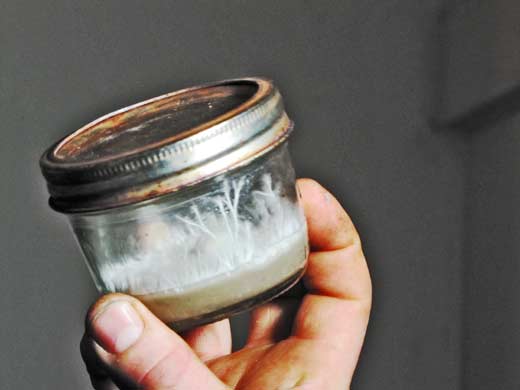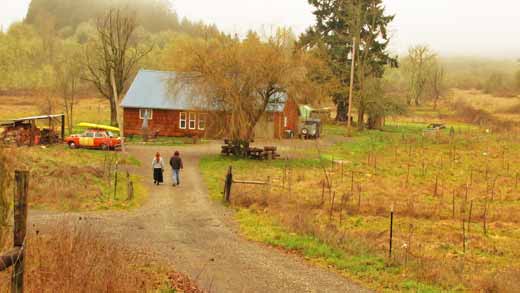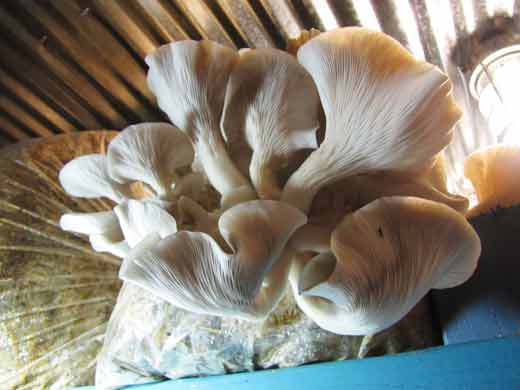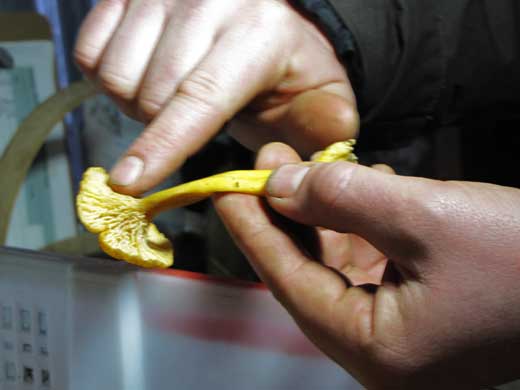Dustin Olsen knows “a lot of people think of mushrooms growing in dark, dank places”, and while that may be true for part of a mushroom’s life, Olsen explains, they eventually require sunlight, and lots of fresh air.
He should know. Dustin and his wife Jennifer run the Mushroomery where they grow wild and cultivated organic mushrooms: Blue Oyster, White Elm, Almond Portobello, Lion’s Mane, Shitake, and others.
For commercial mushroom farms, there are two different ways to breed mushrooms, either by germinating spawn in a petri dish under sterile conditions (Olsen uses mason jars), or by the process of cloning. Cloning involves collecting a sample of the fruity tissue of the mushroom, and growing it in a petri dish until it has colonized enough that it can be transferred to a different medium, usually grain or sawdust.
The principal difference between the spawn and cloning process, cloning yields an exact replica of the original mushroom strain. Spawning, by contrast, although similar by requiring a lab like environment for germination, and eventual transfer to an intermediate medium (also usually, grain or sawdust), does not produce an exact copy.
There’s many different characteristics that may emerge, for example, a strain that grows fast, or oppositely, slow; a high yielding strain, or conversely, a low yielding one, there’s no way to know in advance. That’s because, in the spawning process, the spores which come from the underside of the mushroom (the gill structure), contains billions of tiny spores. Mushrooms are sexually reproducing, and so the spores, as Olsen explains to us, contain different male and female sets of chromosomes that when combined together produce a mushroom strain with inherited traits from each set of chromosomes.
For Olsen though, his favorite mushroom to grow, is the Almond Portobello. From Brazil, the cultivated mushroom has a strong almond marzipan like flavor. “It’s just wonderful”, he says with a smile.
Apparently, the blue oyster starts out blue in color but as it mature it loses color, eventually becoming what you see in the picture above, a shade of white.
The underside of a mushroom as you can see contains a gill like structure where billions of spores reside. Olsen rubs his finger across, and there are millions of spores that are collected on paper that he can use for germination.
I took this picture of behind their mushroom farm of a worker in the distance. You would expect a wild mushroom farm to be located in the middle of nowhere, and that’s the feeling I had when I took this picture.
Most of the videos featured on Cooking Up a Story were produced, filmed, and edited by Rebecca Gerendasy. Fred Gerendasy contributed as a writer to many of the posts and occasionally as the interviewer. Visit Rebecca Gerendasy Clay – Art and Fred Gerendasy Photography to see their current work.





